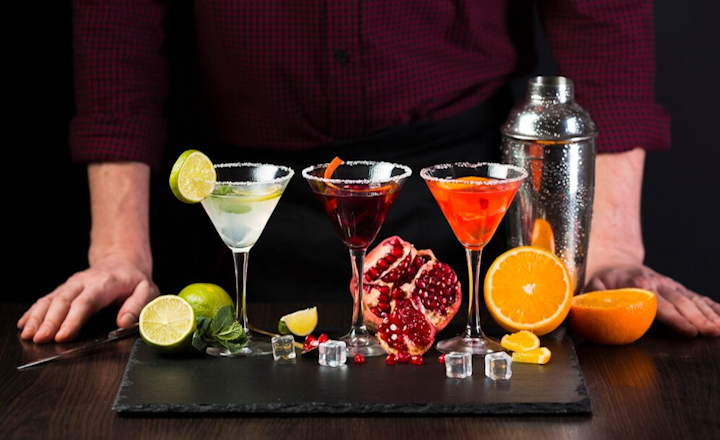
When you first step into the world of cocktails, the language of mixology can feel like a foreign dialect. Words like “muddle”, “neat” and “shrub” can leave even the most eager beginner scratching their head. But fear not! This helpful guide from Mister Bartender will help you decode the essential cocktail terminology, so you can order, mix, and enjoy your drinks with confidence.
Shaken vs. Stirred: The Basics
One of the first decisions a bartender makes when crafting a cocktail is whether to shake or stir. These methods aren’t just for show – they impact the drink’s texture and flavour.
- Shaken: Typically used for cocktails with fruit juices, dairy, or other thick ingredients. Shaking a cocktail with ice thoroughly blends the flavours and adds a frothy texture. Think of a classic Margarita or a Piña Colada.
- Stirred: Reserved for cocktails that are primarily alcohol-based, like the Martini or Old Fashioned. Stirring gently blends the ingredients without diluting the drink too much, ensuring a smooth, silky texture.
On the Rocks, Neat, or Up?
Another common set of terms in mixology refers to how your drink is served:
- On the Rocks: Served over ice. This method is perfect for spirits that you want to sip slowly, allowing the ice to gradually chill and dilute the drink, releasing different flavours as you go.
- Neat: A spirit served at room temperature, without ice or any mixers. This is the preferred way to enjoy high-quality whiskey or cognac, where the full range of flavours can be appreciated.
- Up: A drink that’s shaken or stirred with ice, then strained and served without the ice. Classic examples include the Martini and the Manhattan.
Understanding Garnishes and Glassware
Presentation is key in the world of cocktails, and this is where garnishes and glassware come into play.
- Garnish: More than just decoration, a garnish can enhance the drink’s aroma and flavour. A citrus twist adds a bright, zesty note, while a sprig of mint can make your Mojito even more refreshing.
- Glassware: The type of glass used is crucial for the cocktail experience. A coupe glass, with its elegant, shallow bowl, is ideal for drinks served “up”, while a highball glass is perfect for mixed drinks like the Gin and Tonic. The glass not only affects the drink’s temperature and aroma but also its aesthetic appeal.
Essential Tools: Shakers, Strainers, and Muddlers
Getting hands-on with cocktails means getting familiar with the tools of the trade. Here are a few you’ll encounter:
- Shaker: A must-have for any home bartender, the shaker is used to mix and chill ingredients. The most common types are the Boston shaker (a two-piece set) and the cobbler shaker (a three-piece set with a built-in strainer).
- Strainer: Used to remove ice and other solid ingredients from a drink before serving. The Hawthorne strainer, with its spring coil, is the most versatile and widely used.
- Muddler: A tool used to crush ingredients like fruit, herbs, and sugar cubes to release their flavours. This technique is essential for cocktails like the Mojito or the Old Fashioned.
Demystifying Mixers and Modifiers
Beyond the base spirit, mixers and modifiers are what give a cocktail its unique character.
- Mixer: Non-alcoholic ingredients like soda, juice, or tonic water that make up the bulk of many cocktails. They balance the potency of the alcohol and add complementary flavours.
- Modifier: Ingredients like vermouth, bitters, or liqueurs that add complexity to a drink. They’re used in smaller quantities to tweak the flavour profile, adding sweetness, bitterness, or aromatic qualities.
Getting Creative: The Art of Custom Cocktails
Once you’ve mastered the basics, you can start experimenting with custom creations. Understanding the role each ingredient and technique plays allows you to tweak recipes or even invent new ones. Whether you’re hosting a cocktail party or just enjoying a quiet evening, knowing the language of mixology will help you appreciate your drinks on a whole new level. Cheers!





